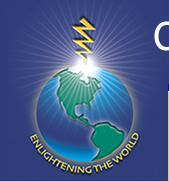
When Is Charity Truly Charity
|
 |
|
| Adam Sokolow Senior Advisor |
I was in third grade when I first heard my teacher read 1 Corinthians 13:3 from the King James Bible. (Yes, they still read passages from the Bible in the Philadelphia public schools when I was growing up.) “And though I bestow my goods to feed the poor, and though I give my body to be burned, and have not charity, it profiteth me nothing.” What she had just read made no sense to me! Yet the fact that she was reading from a famous book held my attention. Perplexed, but being naturally curious, I kept on pondering, for many years: What could that mean?
As that enigmatic Bible verse clearly stated, just giving something away does not equate to charity. This becomes clearer when we realize that it’s possible to give something yet not truly give it at all; think of offering bait on a fishhook. Unscrupulous people employ this deception all the time: they attempt to lure us with shiny promises, but only later do we realize that their promises were merely a ploy to take something from us. Case in point: the arch-criminal Bernie Madoff, who offered his close friends and associates exorbitant profits on their investments, all the while running an enormous Ponzi scheme that ruined thousands of lives.
That form of criminal deception may seem obvious in retrospect, but what if someone is genuinely and sincerely motivated but is also suffering from some form of self-deception? For example, those of us who live in New York City have experienced the book-waving, screaming psychotic street preacher who annoys every passer-by with their oh, so sincere promises of heavenly salvation.
Unfortunately, even if we have the best of intentions, our attempts at charity can be disastrous if we haven’t thought through the consequences. Consider, as only one example, the shipments of brown rice that the United States sent to the people of China during their famine in the 1960’s. With good intentions, but overlooking any possibility of cultural preferences, we sent them brown rice because we believed it was more nutritious. Many of the peasant folk at the time were so accustomed to eating polished white rice, however, that they didn’t recognize our gift of natural brown rice as food, and consequently did not eat it.
What, then, are the hallmarks of true charity? It seems to me that that it must include three facets: first, we actually need to “physically” offer something; next, we must have the proper “emotional” motivation for our gift; and third, we must have an adequate “intellectual” understanding that our act of generosity will actually be helpful to those who are receiving it. These three pillars of charity are often symbolically referred to as the integrated efforts that involve Hand, Heart, and Head.
Fortunately, charity is actually quite commonplace; we see it expressed all the time, from a simple handout to a disadvantaged person on the street to the many cultural and medical buildings in our urban areas with their patrons’ names prominently displayed on the façade. On the surface, therefore, it seems that the Hand, Heart, and Head prescription for charity is a rather workable and satisfactory model, but if we delve a bit deeper beneath the surface of things, there’s more to it than that!
For 1 Corinthians 13:3 posits the question about authentic charity within a religious or spiritual context, explicitly stating that if you simply give without charity then it profits you nothing. So where is that pesky verse actually directing our attention? I have come to believe that this interpretation of charity is further illuminated when we realize that it is an expression of a spiritual or vital urge toward loving kindness and wisdom, which emanates from deep within our soul.
Viewing the matter through this lens allows us to understand why false charity can be harmful to both others and ourselves, and true charity is a win-win! For when we make the choice to express this urge of our soul through kind and thoughtful actions, we not only enrich the lives of others; we also enrich ourselves by nurturing the most foundational and authentic aspects of our humanity.
This interpretation further helps to explain how and why a person with only the most modest means can move through life with a gleam in their eyes and an authentic smile, while others who seem to have it all often appear troubled and look as if they are continually tormented by inner demons. The distinction between these two types of people turns not on their material status but rather on whether they have come to personal terms with the wisdom conveyed in 1 Corinthians 13:3.
What’s more, I believe that the Dalai Lama would agree with me. Let me share, from personal experience, a humorous anecdote that he confided to those in attendance at one of his talks: Leaning forward, he said, “I’ll tell you a little secret about why the Dalai Lama practices compassion. I really do it for very selfish reasons! You see, when I’m nice to people they are always smiling at me, which makes me feel good. And that’s why I do it!” At which point everybody in the room burst out laughing!
![]()
Center for Empowered Leadership ®
Email: info@cfel.org
Phone: 1.609.259.7911
